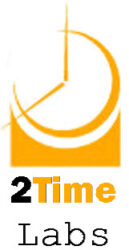 As I mentioned in a prior post, I was planning to review an e-book that describes the Pomodoro Technique. A deeper read confirmed that the book is an interesting and well-written one, but it suffers from the challenge that all that books on time management face — that the readers are not the writer.
As I mentioned in a prior post, I was planning to review an e-book that describes the Pomodoro Technique. A deeper read confirmed that the book is an interesting and well-written one, but it suffers from the challenge that all that books on time management face — that the readers are not the writer.
Before I explain what I mean by that, let me start by highlighting some of the strengths of the approach.
The foundation of the approach is actually a philosophical one, and looks to change the way time is perceived. One of its goals is to convert time from an enemy to an ally.
I thought that this was pretty powerful way to start, even though I found what followed to be a bit hard to understand, and probably requiring an entire e-book of its own.
The e-book quite rightly zeros in on specific habits that, if implemented, would bring a tremendous amount of order to the life of a professional who has a weak time management system. It describes a pretty rigorous method for dealing with time demands, mostly using paper, and using a modified form of ToDo lists as a way to marshall all the activities to be done in the day.
It presents a clear process of planning, monitoring, measuring and improving, which seems to follow the Plan-Do-Check- Act cycle popularized by W.E. Deming, the quality guru. At the end of each day, the user is encouraged to review the day and determine how well it was planned and executed.
This habit of continuous improvement would make Deming proud.
The name “Pomodoro” comes from the Italian word for tomato, and refers to 25 minute slots that the user is told are the essential building block for each day. Tasks should be started, and scheduled to be completed with 1, 2, 3 or more Pomodoro’s … but never 3.5 or 5.2 — fractional time-slots are forbidden.
This technique is a sound one, as it keeps the user’s focus on the activity at hand, and the fact that a certain amount of time has been budgeted for the activity. Once the 25 minutes are up, the user is taught to take a 5 minute break, before starting a new Pomodoro, which make involve a new task, or the continuation of an old task.
All this activity is tracked on paper, which means that there is a fair amount of recording happening at all times, but it also means that some high quality physical habits are continously being developed.
As time management systems go, it’s not a bad one, from my point of voew, and would take a user to a Yellow Belt, according to the 2Time method of evaluation. That’s because, it doesn’t allow for scheduling time in the day, but instead requires the user to make a prioritized list, and simply start working on the item with the highest priority first.
This is all good for a day that has a low number of simple time demands. It would fail where allToDo list based systems fail — when there are too many items to be viewed on a single list, and when multipe tasks are needed to accomplish a complex objective, for example.
But it IS better than the time management systems that most people invent on their own, without any assistance or understanding of what they are doing.
The major issue I have with the Pomodoro technique is that it probably works best for one person – Francesco Cirillo, its creator. Essentially, he has shared a time management system that he uses, but makes no allowance for the fact that his sauce for the goose might not be sauce for the gander.
In other words, there are probably not too many people that can pick up his system wholesale and implement it, as is. The vast majority would have to make modifications to fit their own habit patterns, idiosyncracies and preferences.
For example, I have started trying out a program called BubbleTimer, which allows me to track how my time is being used. It would replace one of the sheets in the Pomodoro technique, and as far as I can tell, it would do the same thing more elegantly.
However, if I were a Pomodoro user, I’d be on my own in making this innovation. This is true because the author hasn’t tried to do anything more than describe the details of the system as implemented, instead of the principles behind each of its elements.
That’s a little like saying “use only white sugar from Domino’s in this recipe because that’s what works.”
Here in Jamaica, Domino’s is not sold.
Instead, we have other brands of white sugar, brown sugar, molasses, honey, Sweet n Lo and other substitutes. To determine whether or not they are acceptable, I’d need to know something about the chef’s reason for using “Domino’s white sugar.”
When the reason, or principle, behind the choice isn’t shared, I am left on my own either having to take a guess, or abandon the recipe.
Is BubbleTimer a suitable substitute to the specific forms the author recommends?
I can only guess. Or abandon the recipe.
In this sense, the Pomodoro technique over-reaches, and over-prescribes the particular elements of the overall solution that the author uses.
It’s a good approach, but to make it Time Management 2.0-ready, we’d have to be able to understand what principles it’s based on, so that when we want to make our own time management systems to fit our lives, we are able to use the sound principles underlying this approach, and all others that work for their creators.
Unfortunately, the readers are not the writer, but I sense that there is something behind the technique that could be useful to all.





